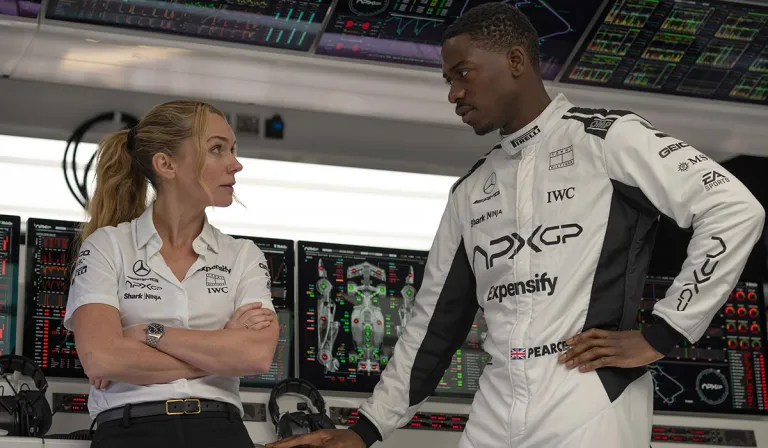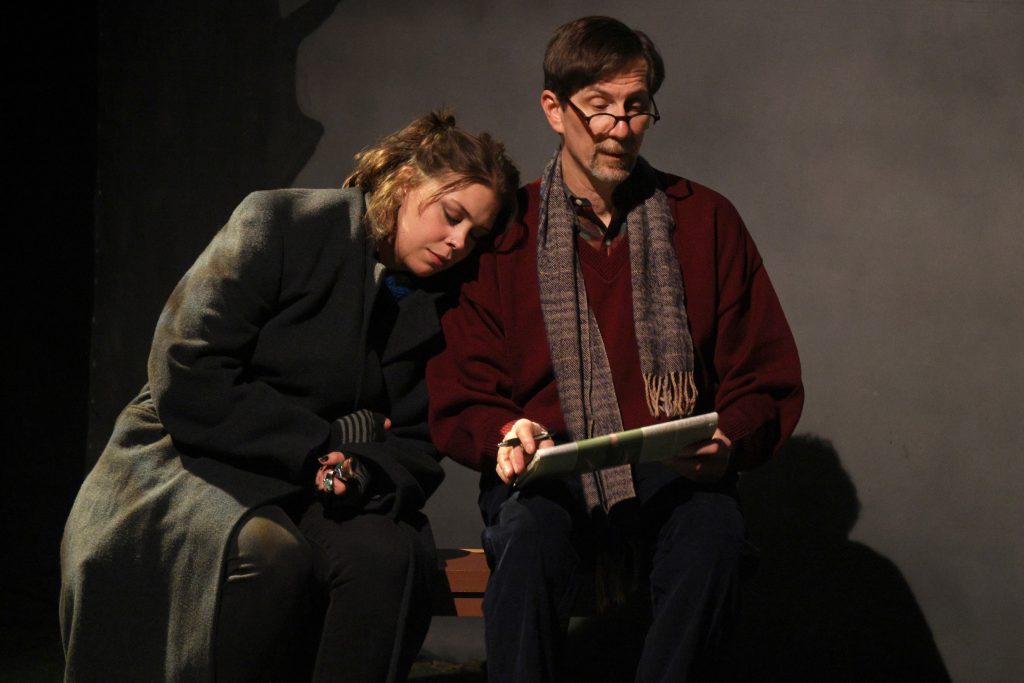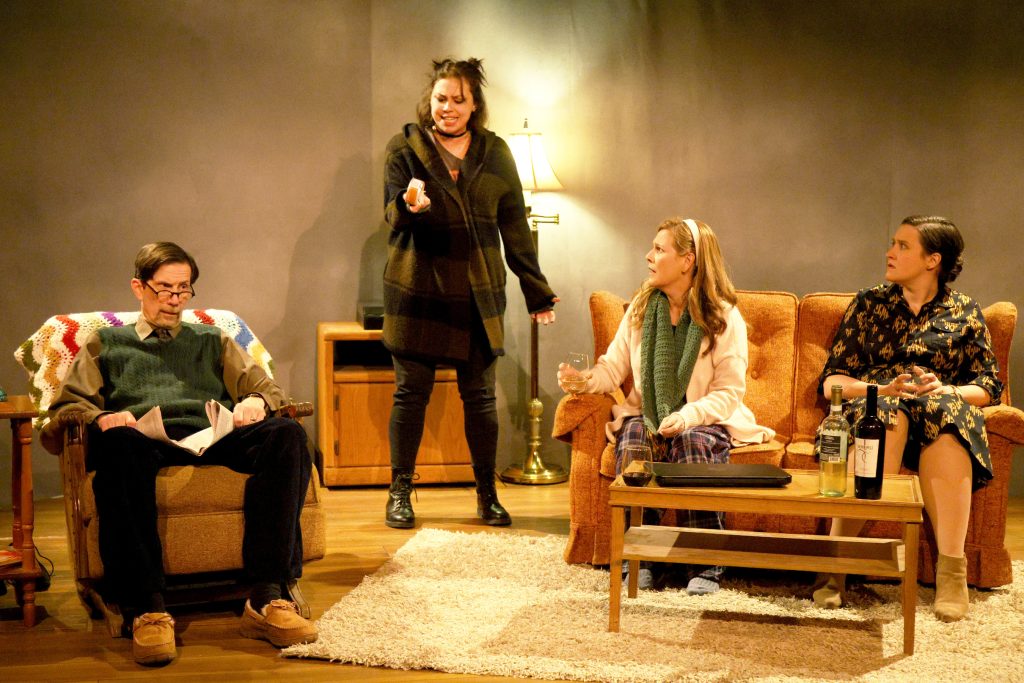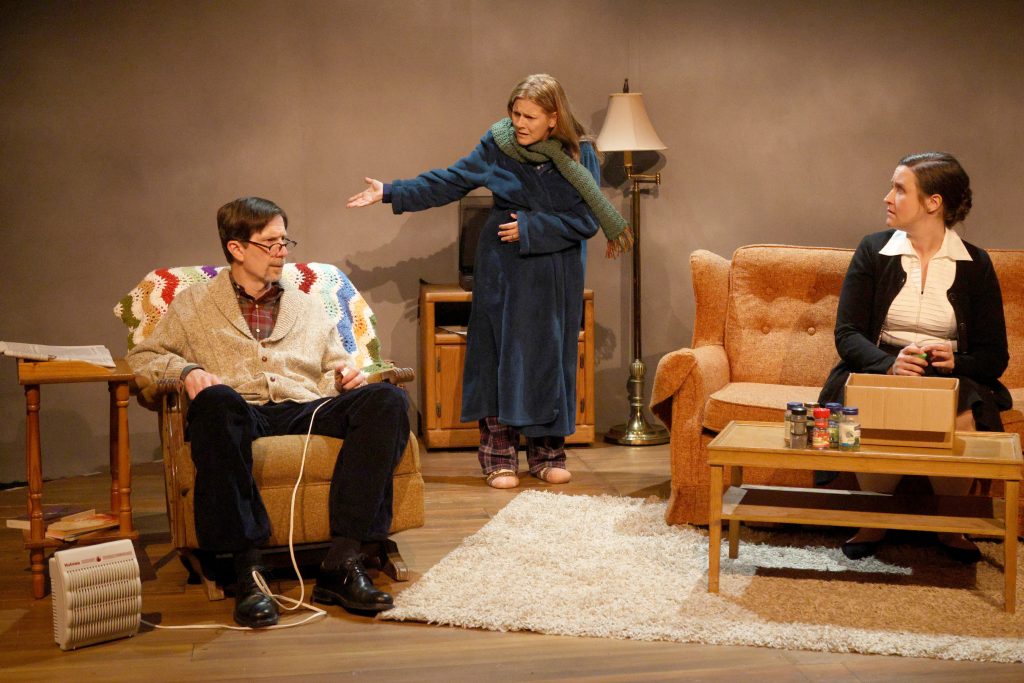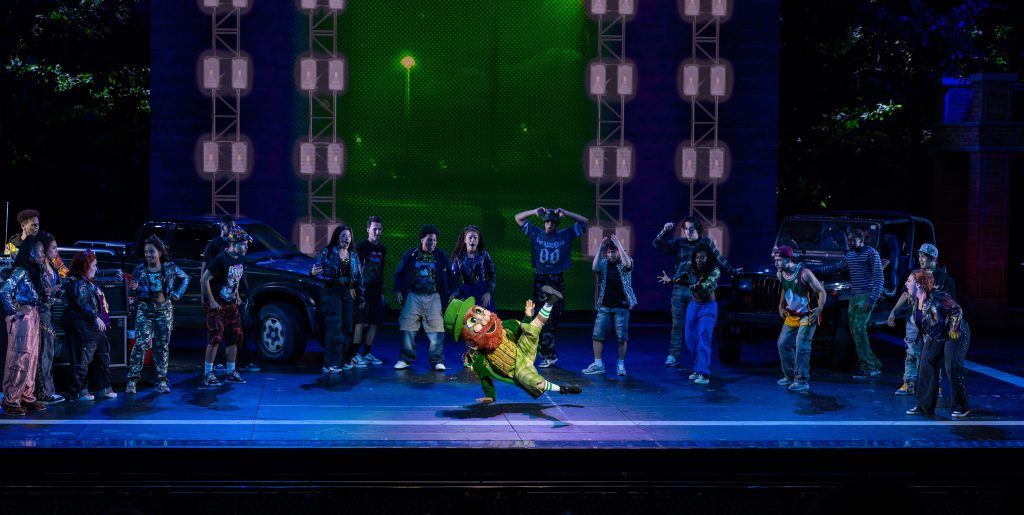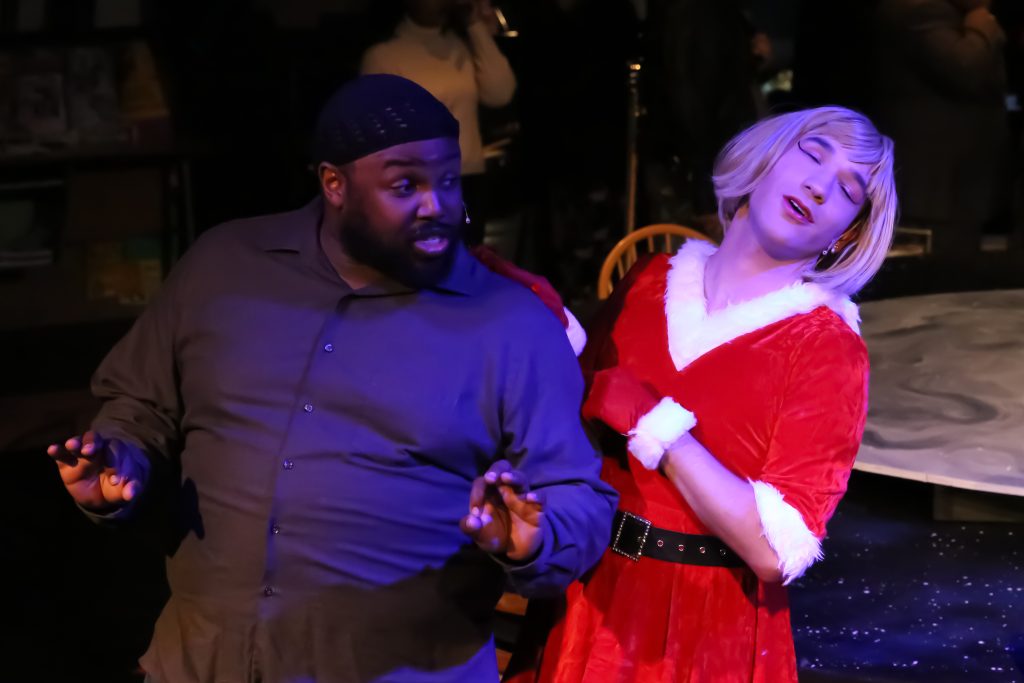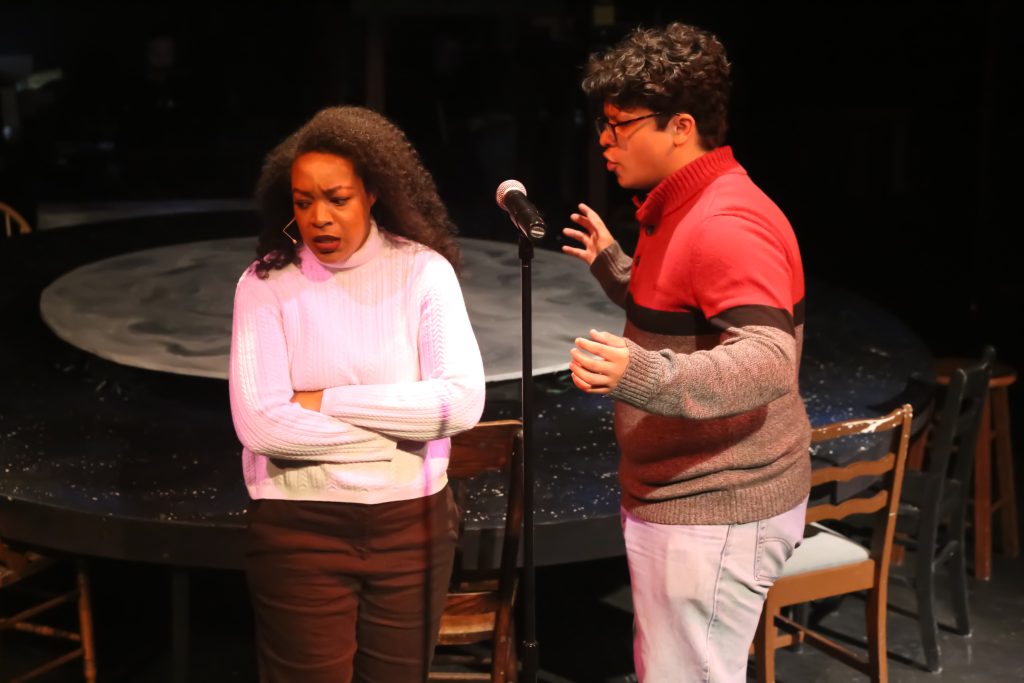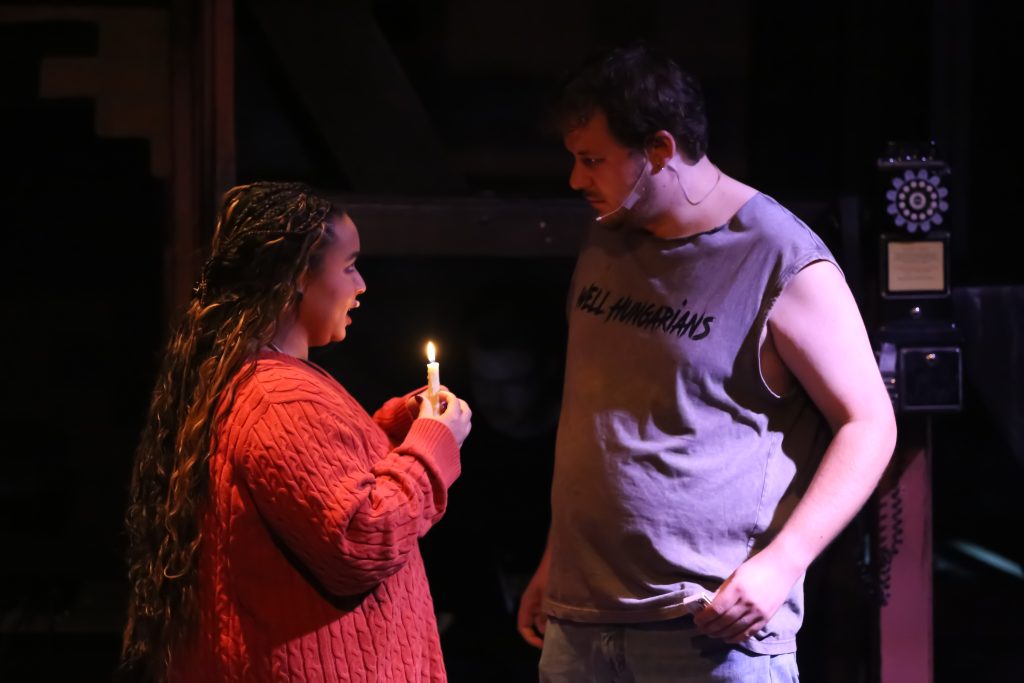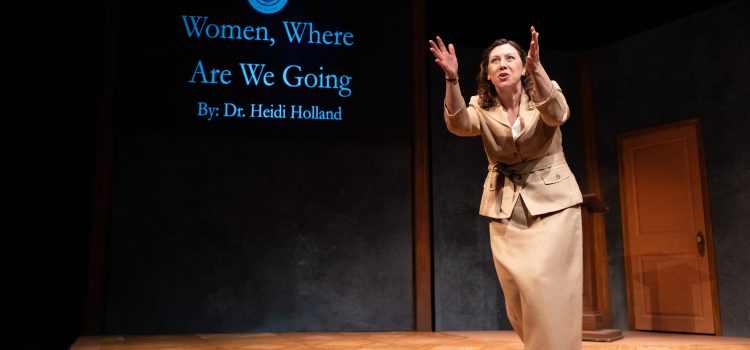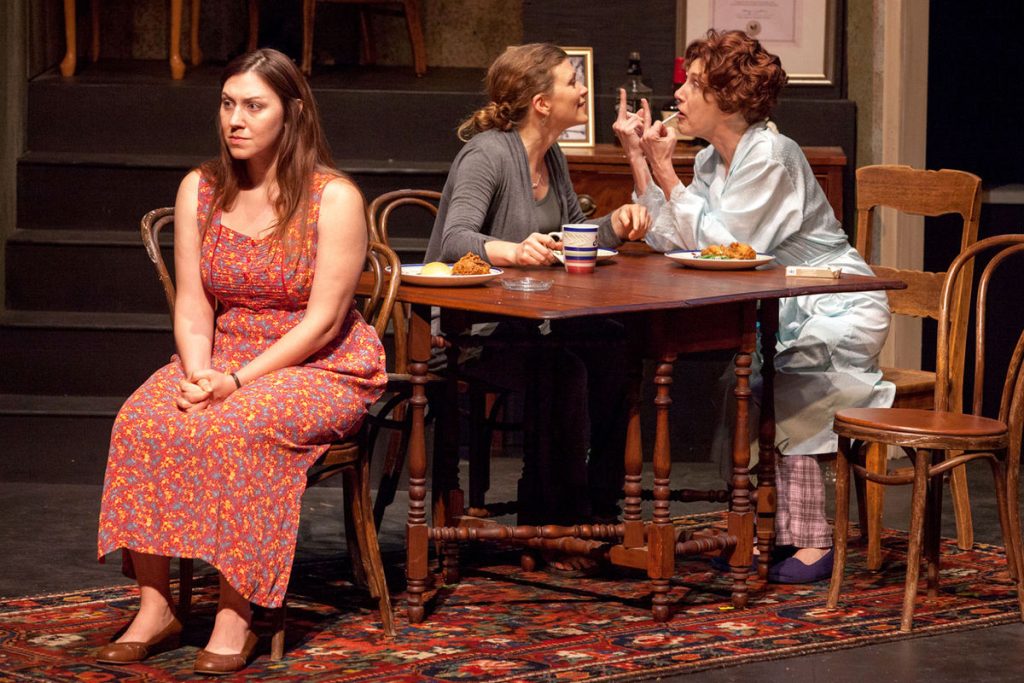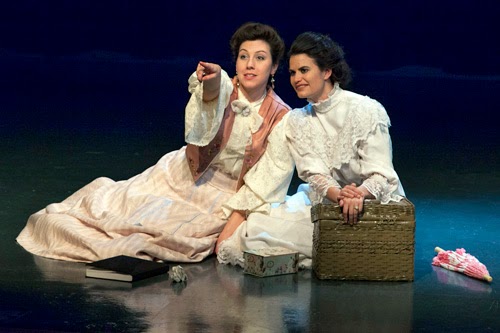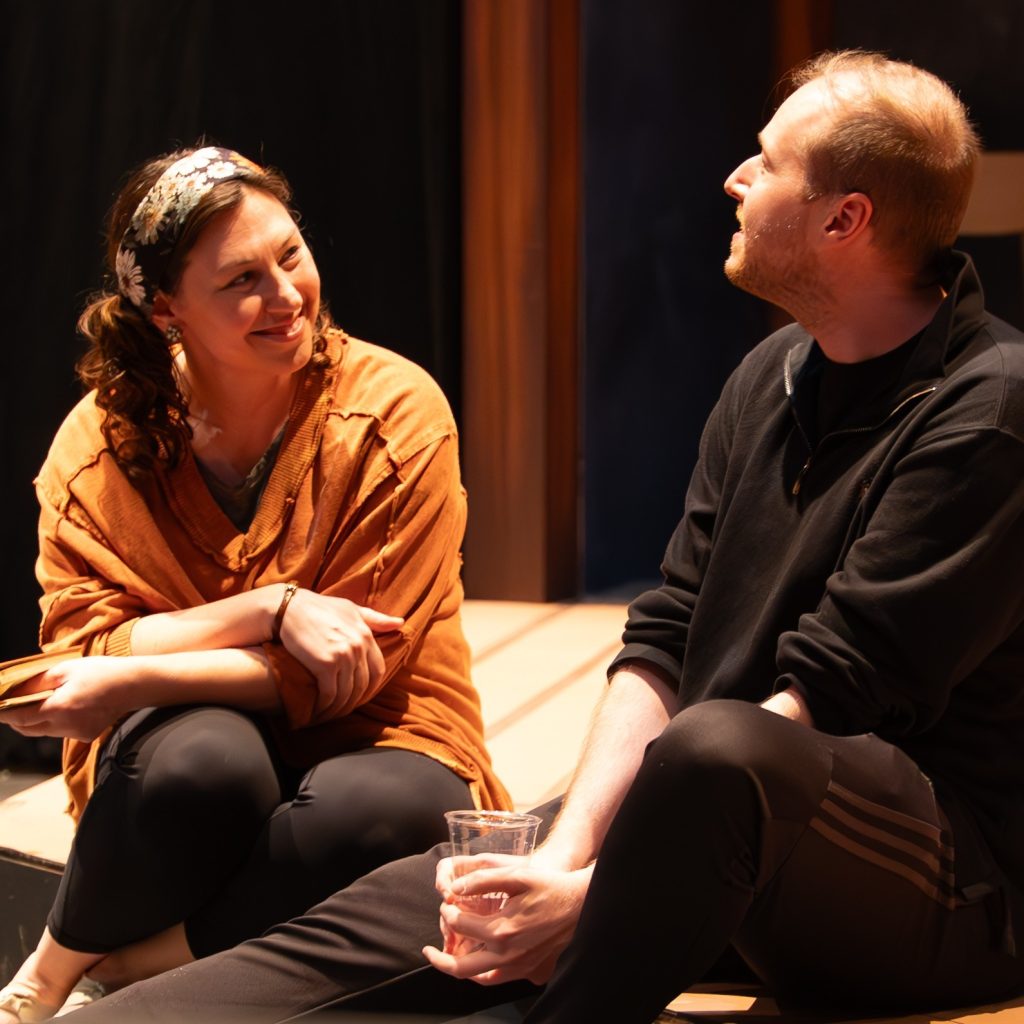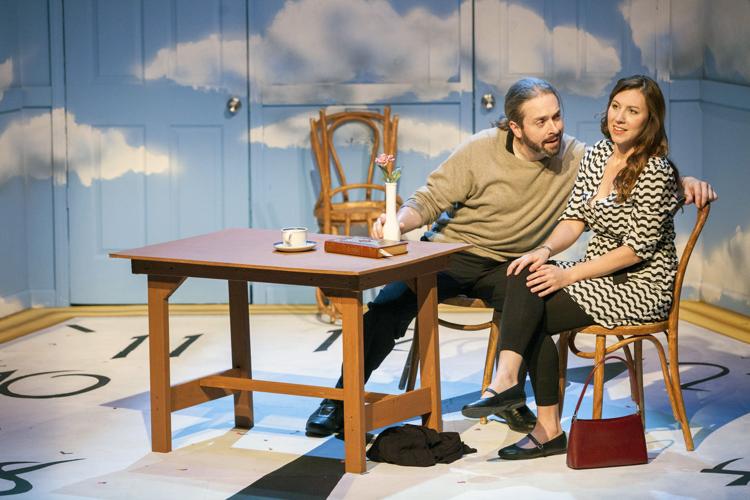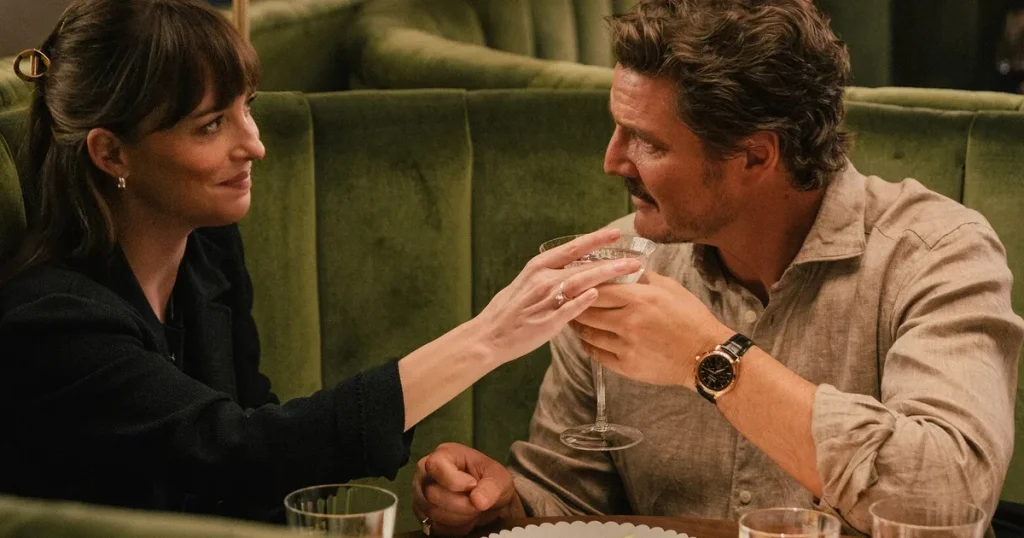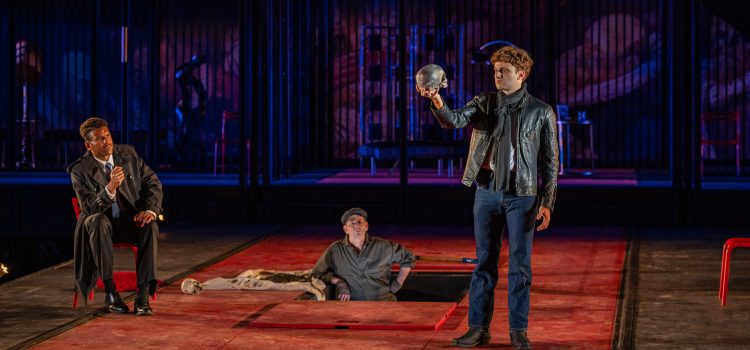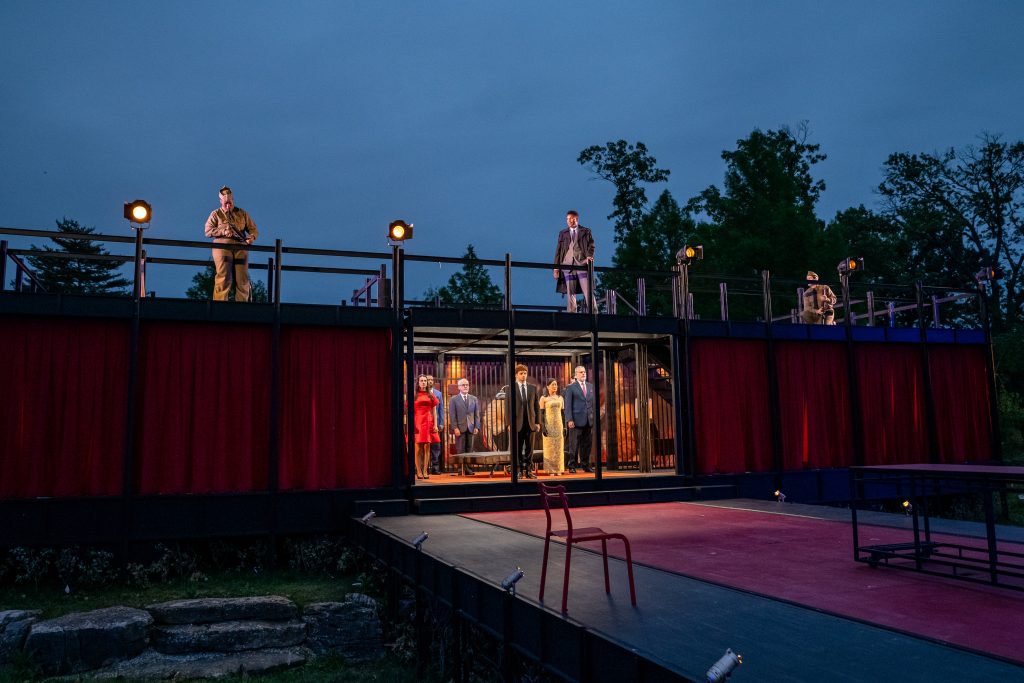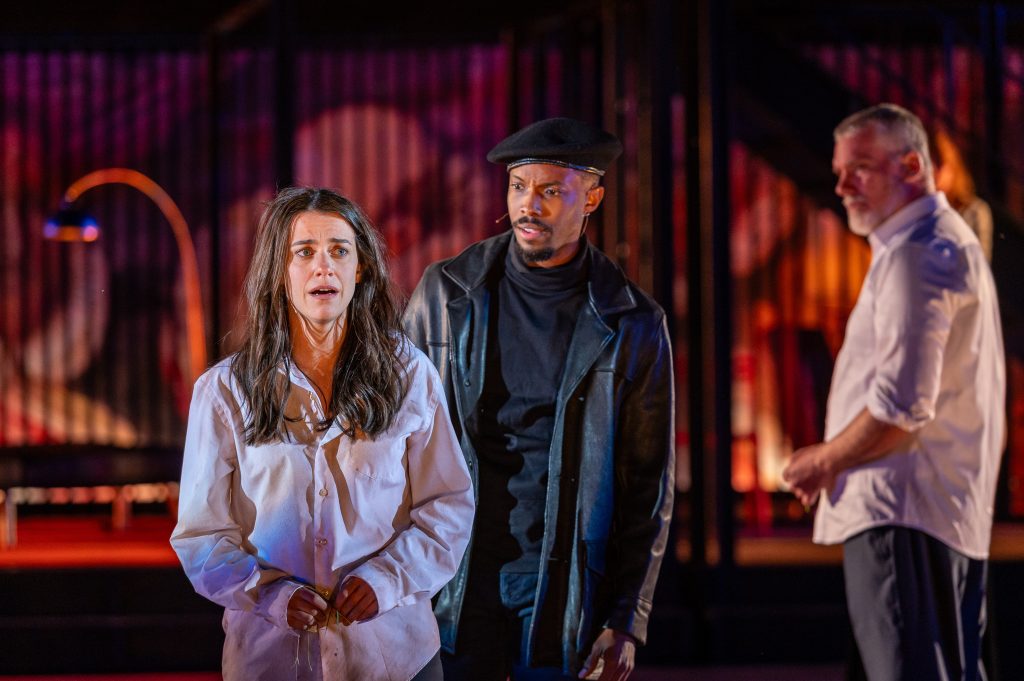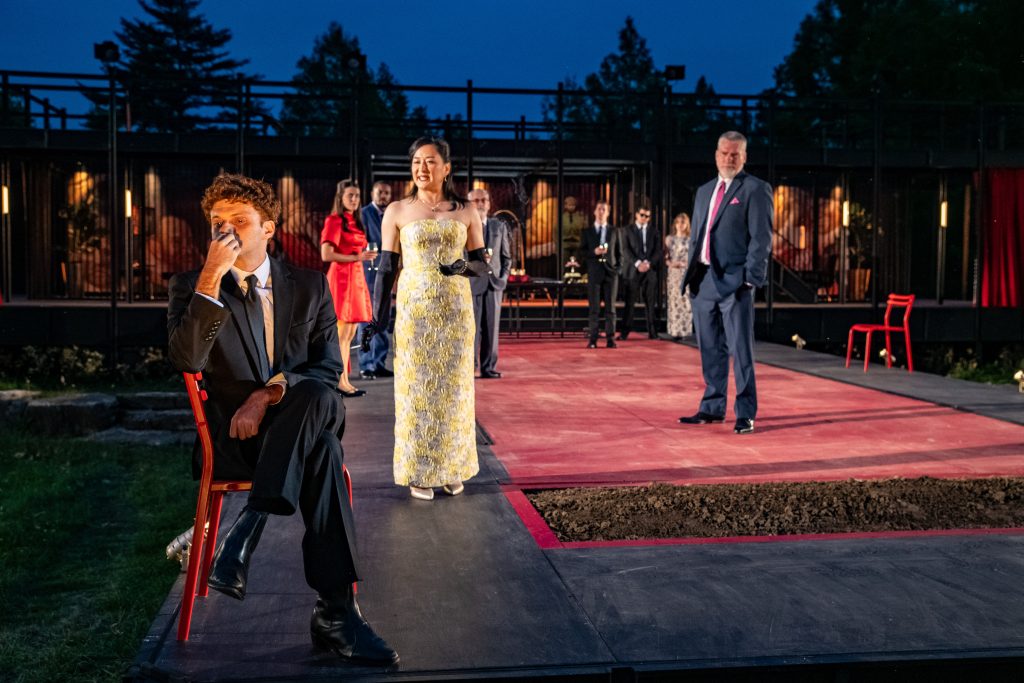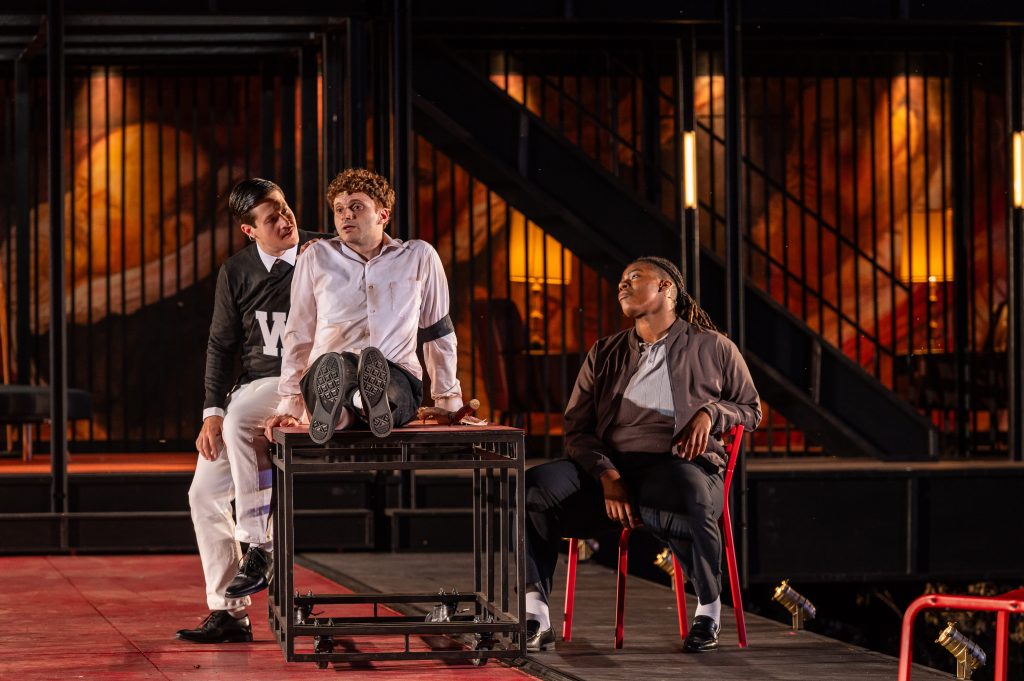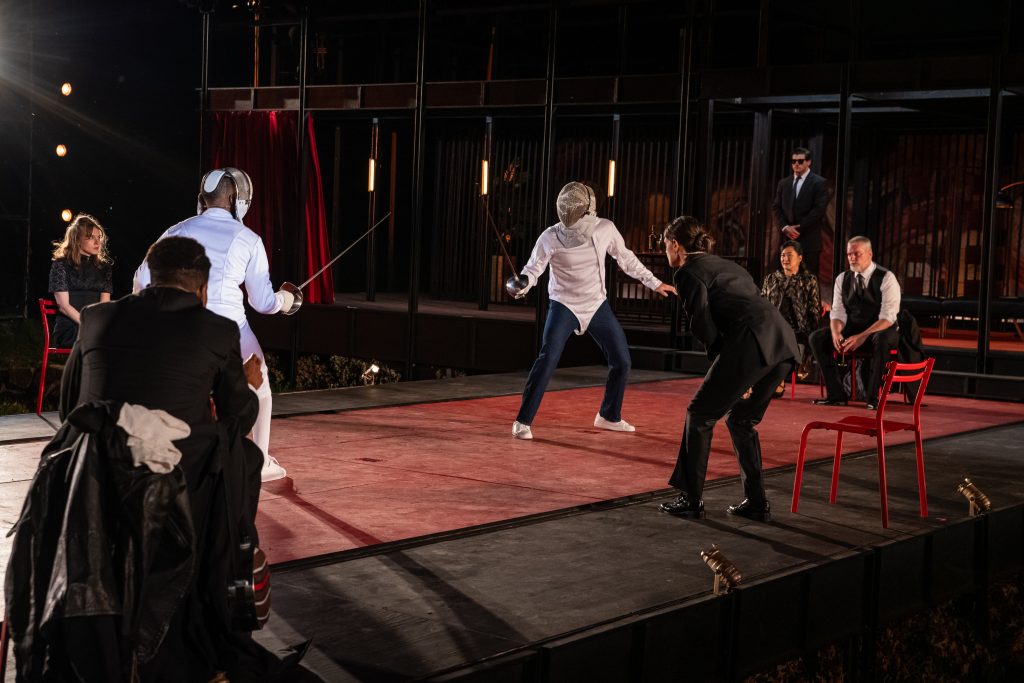By Lynn Venhaus
“Come From Away” wraps you in a warm hug and doesn’t let go.
Brimming with heart, humor and humanity, the 2017 musical arrived for its highly anticipated Muny debut with all the feels intact, making clever use of the expansive stage and its dynamic ensemble demonstrating the extraordinary power of kindness during adversity.
This deeply personal, emotionally complex story has resonated strongly with theatregoers, and the Muny’s customary attention to casting and execution put that at the forefront. The first-rate cast projects enthusiasm and affection for this material from start to finish, buoyed by the creative team’s excellence and the audience’s embrace.
The 100-minute show focuses on the town of Gander, Newfoundland, and its hospitable response to 38 planes landing at their airport with 6,122 passengers and 473 crew on Sept. 11, 2001.
After the terrorist attacks on the World Trade Center and the Pentagon, the FAA closed the US airspace and Operation Yellow Ribbon began – a coordinated effort to accommodate diverted flights. Gander was among the towns helping, including nearby Lewisporte and Appleton.

Gander, a Canadian community of about 9,600 and home to the Gander International Airport, opened their homes and converted schools and community buildings into shelters, becoming a beacon of light in the darkest of times.
In the U.S. and for those affected elsewhere, it was an anxious and uncertain period. The fearful passengers had to stay on planes for many hours, without any information other than it was an emergency, until they were officially released and herded into buses with only their carry-ons.
Based on these real people’s stories, the husband-and-wife team of Irene Sankoff and David Hein vividly wove acts of compassion, listening, laughing, hospitality and fellowship into a heart-tugging narrative to accompany their music and lyrics.
They also addressed challenges like culture clashes and language barriers, and how people worked through tense situations.
They focused on a rerouted American Airlines flight from Paris headed to Dallas. Because of Gander’s generosity to strangers who couldn’t leave for five days, lasting friendships formed, resulting in a 10-year reunion in 2011, where the writers interviewed those in attendance.
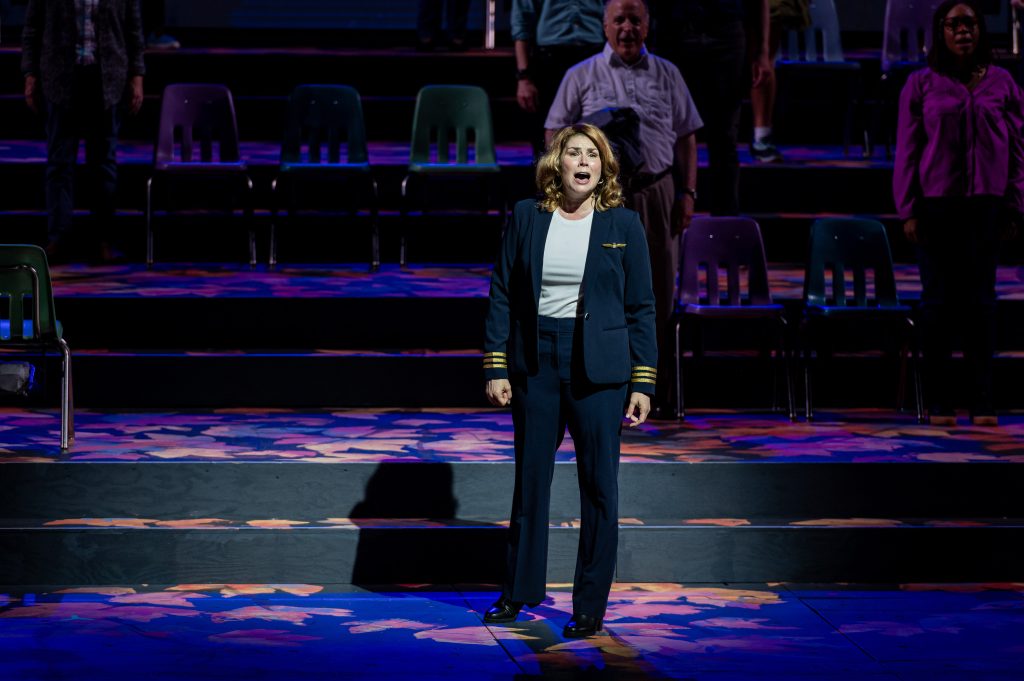
“Come from Away” truly is a remarkable story, with distinct characters that touch our soul. Thus, a theatrical gem was born with tender loving care – now the longest running musical ever from Canada. The Broadway run, interrupted by COVID, played to sold-out houses for 1,670 regular performances and 25 previews from February 2017 to October 2022.
Nominated for seven Tony Awards, including Best Musical, Christopher Ashley won for directing. (“Dear Evan Hansen” was the big winner that night and will debut at the Muny in July).
A trio from last year’s revered classic “Les Miserables” has returned to craft another powerful tale of enduring connection – director Seth Sklar-Heyn, choreographer Jesse Robb (whose mother was born and raised in Newfoundland), and costume designer Gail Baldoni.
Their meticulous work, along with exemplary essentials from scenic designer Edward E. Haynes Jr., video designer Mike Tutaj, lighting designer Rob Denton, and wig designer Kelley Jordan, created a vibrant tableau that immediately drew the large Muny crowd into the Far North.
Haynes’ ingenious stairs-jet configuration rotated, using the turntable to swiftly create the necessary spaces. Tutaj’s video work uses news footage from Rogers TV and suggests locations like Tim Horton’s and Trailway Pub, to add awareness of time and place. And Denton’s superb lighting gave the show its usual intimate feel.
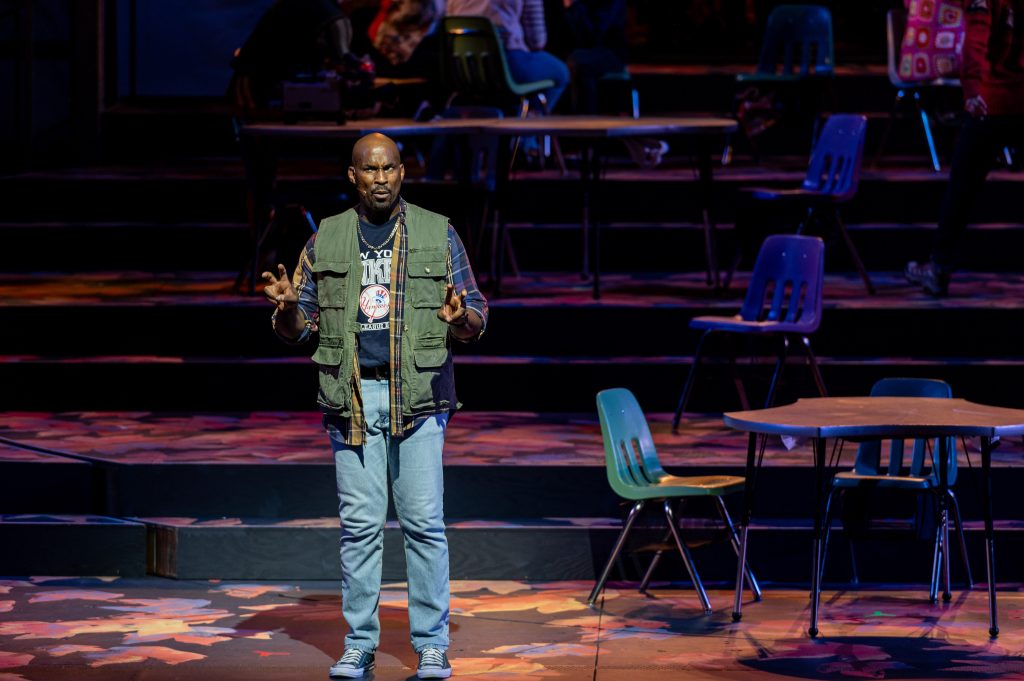
As they seamlessly portray multiple roles – both townsfolks and ‘plane people,’ the players talk directly to us. The proud islanders start their routine on a Tuesday morning, introducing themselves in a chill-inducing “Welcome to the Rock.”
“You are here at the start of a moment…”
Our reaction is immediate, taking us right back to that frightening morning – when we heard, what we saw, how we felt – if you experienced it. If not, its tone is evocative of that tragic day and the aftermath.
Muny stalwart Adam Heller is well-suited to play the take-charge mayor, Claude Elliott, among other characters, leading the opening number and the raucous “Screech In” (involving kissing a codfish and downing rum shots).
Looking back, he tells the audience: “Tonight we honor what was lost, but we also commemorate what we found.”
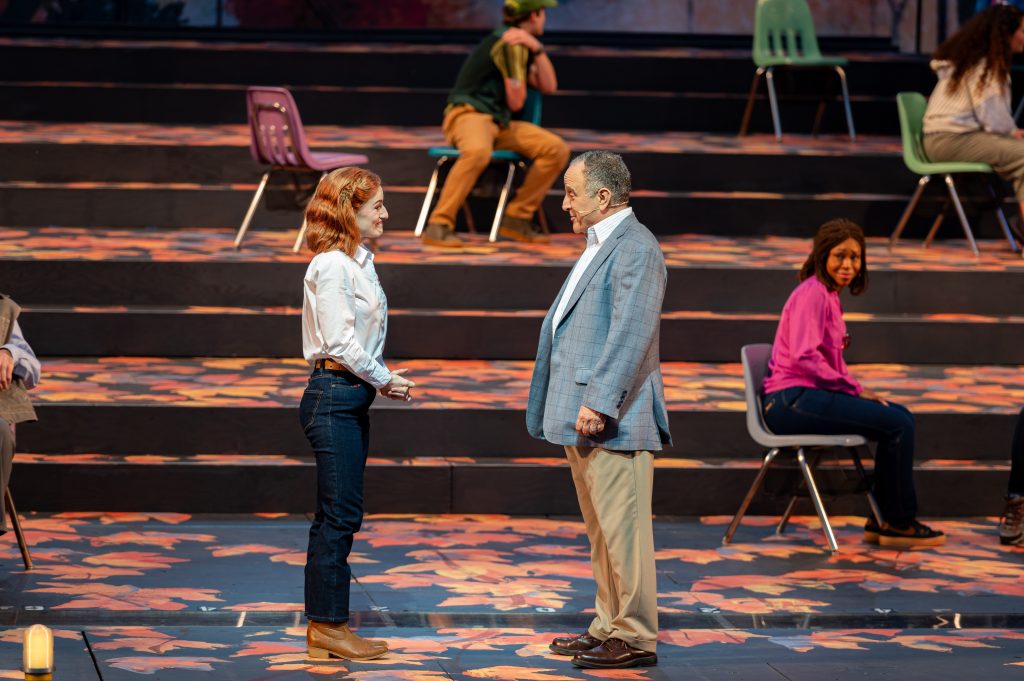
With her powerhouse mezzo-soprano, Heidi Blickenstaff soars as the trailblazing pilot Beverley Bass in the signature song “Me and the Sky.” Impressive as mom Mary Jane in the national tour of “Jagged Little Pill” (including the Fox in January 2024), she is captivating as Beverley, whose passion for aviation drove her career but she now worries that her workspace has become a weapon.
The dozen performers, appearing like regular folk, clearly delineate multiple characters, whether through accents, wardrobe pieces or personality shifts.
Memorable “come from aways” include two-time Grammy winner Tamika Lawrence as Hannah O’Rourke, who is frantically trying to reach her son, a New York firefighter. Her solo, “I Am Here” is heart-breaking.
Stellar veteran performers John Bolton and Ashley Brown are a delightful duo as the British bachelor Nick Marson and divorced mom Diane Gray, whose budding friendship might be more.
A gay couple, “the two Kevins” – Jason Tam as Kevin Tuerff and Trey DeLuna as Kevin Jung, who seemed to be at odds, disagree often. One’s all in for being a good sport, and the other is not comfortable in the public situation.

DeLuna, who was in the national tour, delivers a gut-wrenching turn as Egyptian chef Ali, who is under suspicion as a Muslim, and prejudice grows.
One of the most moving numbers is “Prayer,” showing travelers practicing their faith – Jews, Christians, Catholics and Muslims.
Alan H. Green is comical as Bob, who is confused by all the nice emanating from the locals. He also plays a pilot and an African traveler who can’t speak English. If he looks familiar, in St. Louis, he starred in “Sister Act” at the Muny and in “The Karate Kid” at Stages.
On the home front, total pro Zoe Vonder Haar is ideal as good-natured Beulah Davis, one of the major caregivers. And she doubles as a nervous flyer who gets tipsy and loudly sings “My Heart Will Go On” from “Titanic,” which they watched as an in-flight movie.
Likable Jacob Keith Watson smoothly transforms into the police constable Oz Fudge, a bar owner, Jewish rabbi, a surly traveler and others.
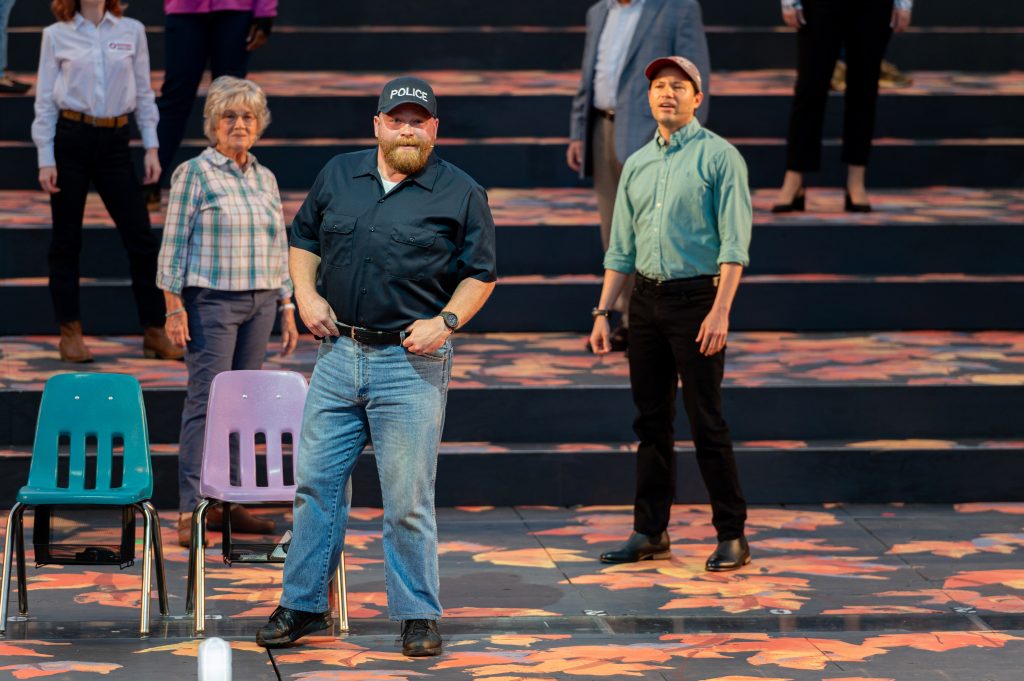
Seasoned Muny vet Abigail Isom is the amiable TV news reporter Janice, whose first day on the job is 9-11, and easily transitions to a freaking out flight attendant. She also plays a store clerk, getting laughs with: “Thank you for coming to Walmart. Would you like to come back to my house for a shower?”
Andrea Burns is the pragmatic SPCA representative, taking care of 19 animals in cargo cages, including endangered Bonobo chimpanzees that are headed to the Columbus Zoo in Ohio.
Dialect coach Joanna Battles helped the cast become Canadians with a specific accent, and their work was impeccable.
The teen ensemble acting as townsfolk and travelers include Chloe Jennings, Grant LaMartina, Annakait Peters-Bahkou, Drew Mathers, Jarod Rhodes, Jameson Roam and Will Schulte.
Standby for the women is Leah Berry and for the men, Spencer Davis Milford.
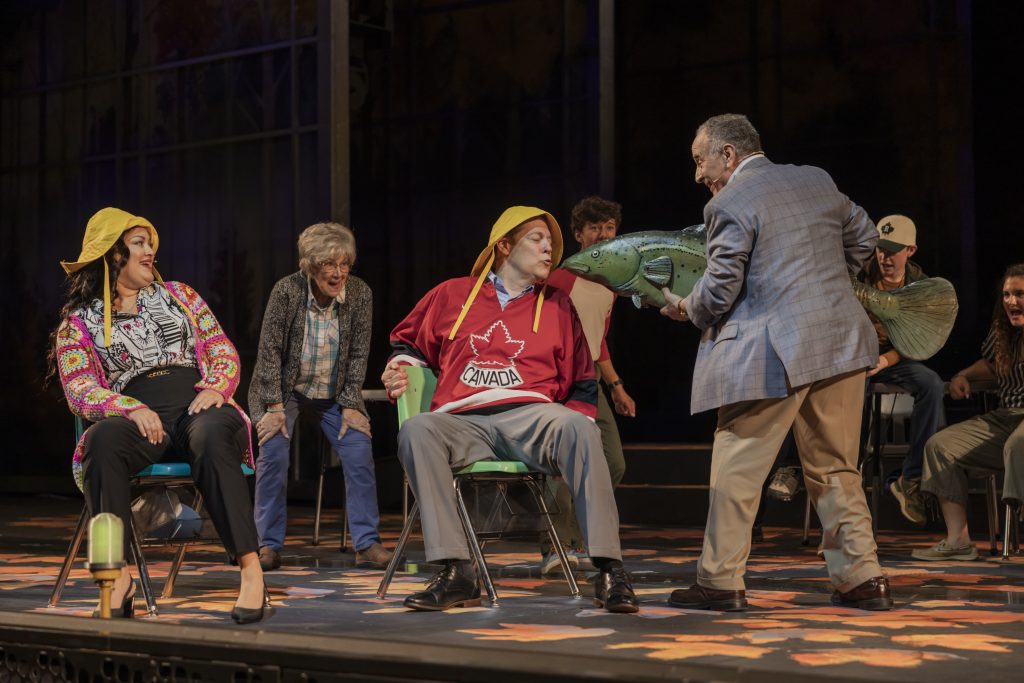
The vocally strong cast harmoniously blends together in the songs that are an integral part of the storytelling – “38 Planes,” “Blankets and Bedding,” “28 Hours/Wherever We Are,” “Darkness and Trees,” “On the Edge,” “Stop the World,” “Somewhere in the Middle of Nowhere,” and “Something’s Missing” – expressing the necessary emotions.
The unifying score reflects the cultural heritage of Newfoundland – using Celtic rhythms and traditional folk, and fuses neatly with emotive modern musical theatre elements.
The robust orchestrations are by Aaron Eriksmoen, with arrangements by Ian Eisendrath, incorporating a fiddle and even an “ugly stick” (household items) on stage.
The Muny orchestra, energetically led by music director Evan Roider, captures the score’s unique sound, adding a harp and whistles to its instruments.
The first national tour came to the Fox Theatre in May 2019, and a return weekend engagement followed in 2023, striking a chord (blubbered throughout, and I wasn’t alone).
With multiple cameras, Apple TV+ filmed the Broadway cast in front of a live audience, including some 9-11 survivors and frontline workers, on Sept. 11, 2021, commemorating the 20th anniversary. It has been available for streaming since Sept. 10, 2022.
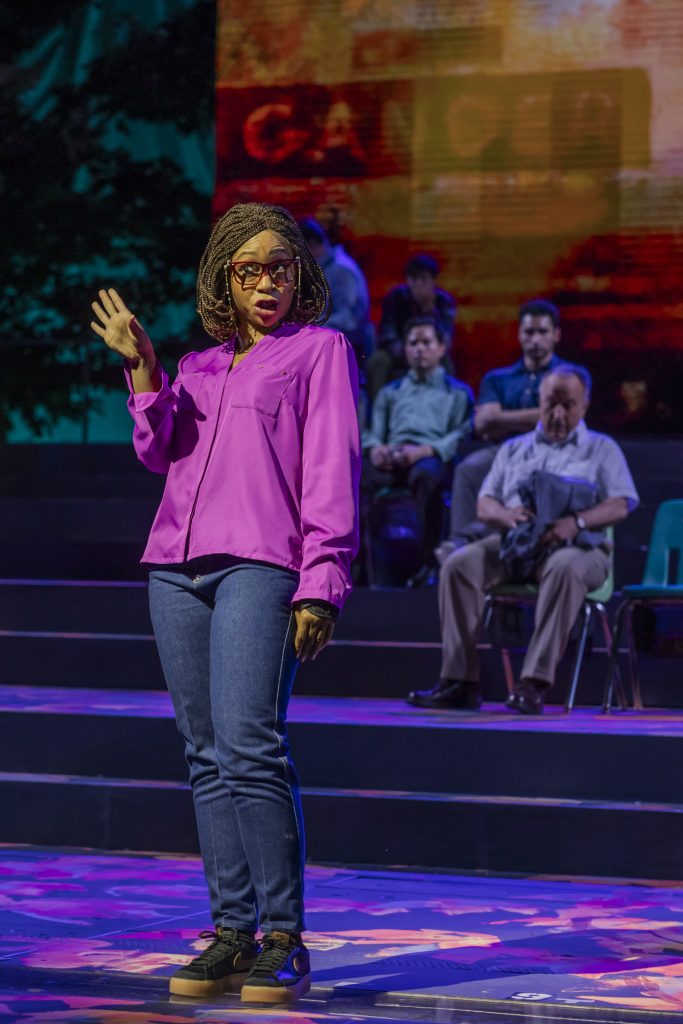
While 9-11 was 24 years ago, that time is etched into our collective memories. After a touching brief display of unity and flag-waving, today’s America is very different.
We now have a divisive political climate that’s mean-spirited and worrisome. Then we were isolated during a global pandemic that impacted our lives, an ever-mutating virus that killed more than 7 million people. More short fuses, more fear of others, anger and outrage are prevailing attitudes.
Recently, in St Louis, the deadliest tornado since 1959 tore apart neighborhoods. Watching a community come together on the Muny stage recalled empathetic responses of the past six weeks here, for people stepped up when called upon to do so.
We’ve been through a lot – as a country and as a region. Yet, glimmers of hope emerge, along with everyday heroes, and it’s gratifying to feel the uplift that “Come from Away” provides.
Mission accomplished. Triumphing with its affecting production that appreciative audiences won’t soon forget, the Muny reminds us why our shared experience is what live theater does best.
The Muny presents “Come from Away” nightly at 8:15 p.m. from June 26 to July 2 at the outdoor theatre in Forest Park. The production is 1 hour, 40 minutes without intermission. For more information, or for tickets, visit www.muny.org



Lynn (Zipfel) Venhaus has had a continuous byline in St. Louis metro region publications since 1978. She writes features and news for Belleville News-Democrat and contributes to St. Louis magazine and other publications.
She is a Rotten Tomatoes-approved film critic, currently reviews films for Webster-Kirkwood Times and KTRS Radio, covers entertainment for PopLifeSTL.com and co-hosts podcast PopLifeSTL.com…Presents.
She is a member of Critics Choice Association, where she serves on the women’s and marketing committees; Alliance of Women Film Journalists; and on the board of the St. Louis Film Critics Association. She is a founding and board member of the St. Louis Theater Circle.
She is retired from teaching journalism/media as an adjunct college instructor.





